Introduction to Crassula Ovata
Welcome to the lush world of Crassula ovata, more affectionately known as the Jade Plant. Nestled in the warm, dry regions of South Africa, this succulent beauty has journeyed far from its native land to grace our homes with its verdant allure. Renowned not only for its aesthetic charm but also for signifying good luck and prosperity, the Jade Plant is a hearty symbol of both ornamental and sentimental value.
In the soft glow of morning light, you might find your Crassula ovata basking quietly, its jade-green leaves shimmering with a dew-kissed radiance. This stoic plant, like a wise old friend, teaches us the simplicity of beauty and the ease of care. Fans of these succulents often share anecdotes of their longevity, with some plants being passed down through generations, becoming cherished family talismans.
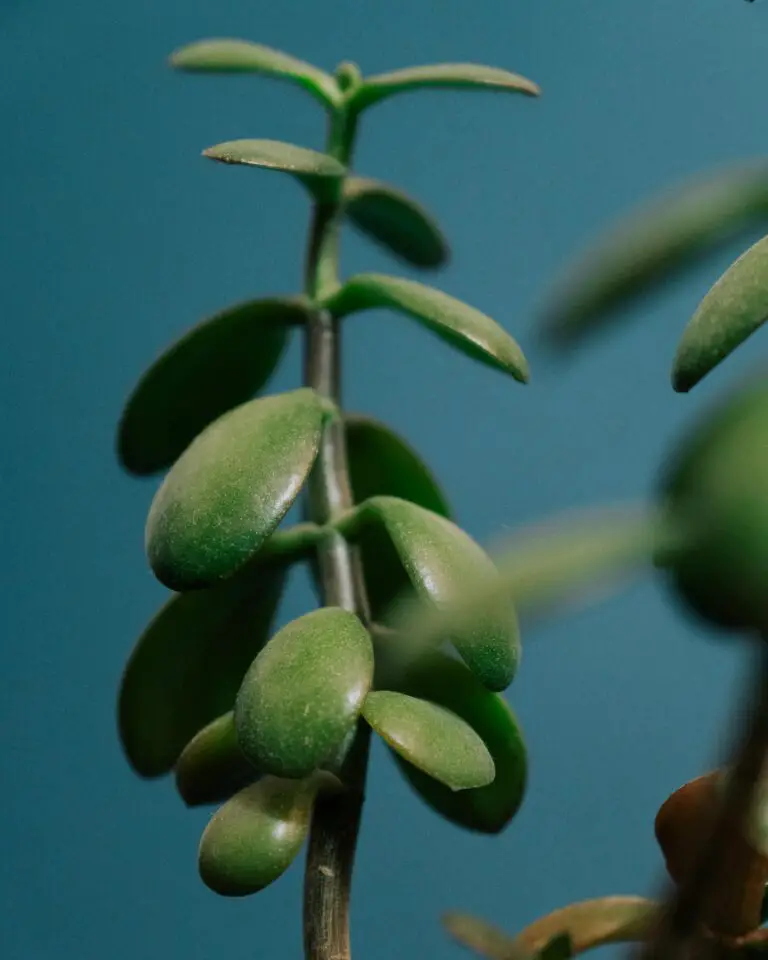
Growing a Jade Plant can be much like nurturing a good fortune in your own living space – as resilient as it is delightful. For more about ensuring your Crassula stays healthy and joyous year-round, check out our expert tips on succulent care.
Choosing the Right Environment
Imagine an oasis of tranquility in your own living space—your Crassula ovata basking serenely in just the right spot, its jade-green leaves glowing with vitality. Selecting the ideal environment for your Jade plant is a blend of art and science, where light, temperature, and humidity meld to create a perfect sanctuary for this succulent gem.
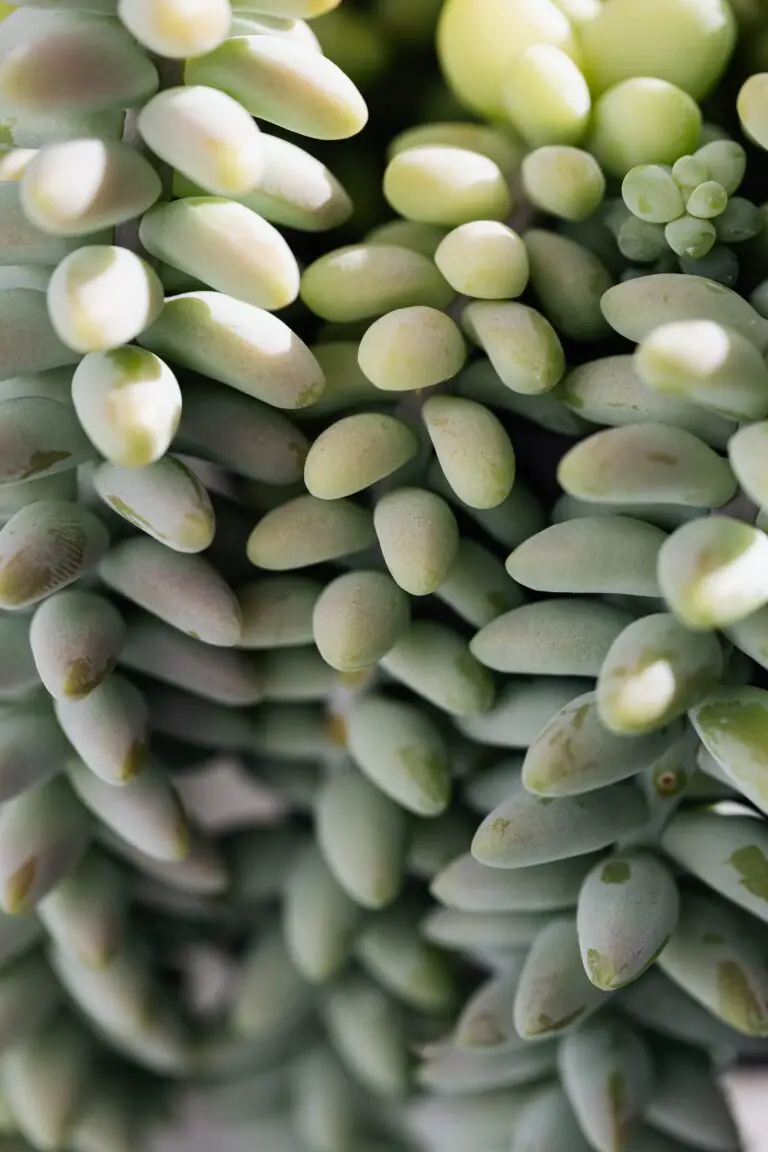
First things first: light is the lifeblood of the Crassula ovata. Envision the sun-draped valleys of South Africa, the natural habitat of the Jade plant; it adores bright, indirect light. East or west-facing windows are your golden ticket here, bathing your Jade in that early morning or late afternoon sunshine without the harshness of midday. If the leaves start blushing red, like a gentle sunset kiss, you’ve struck the perfect balance.
When it comes to temperature, think of a comfortable day where a light sweater is all you need. Your Jade plant feels the same. It prefers a range between 65-75°F (18-24°C)—cozy but not too hot. Drafts are the kryptonite of these steadfast succulents. Make sure your plant’s spot is away from sudden temperature changes that can shock its system, such as near air conditioning units or heaters.
Humidity can be a balancing act. Too much, and your Crassula ovata might feel like it’s on a never-ending tropical vacation—something it’s not suited for. Too little, and it might start dreaming of desert mirages. Aim for a happy medium: room humidity around 40-50% is ideal. No need for a rainforest vibe; your Jade plant will thrive with just a touch of moisture in the air.
For more insights on crafting the perfect home for your indoor plants, this guide breaks down the basics of temperature and humidity for a range of houseplants.
Choose well, and watch as your Crassula ovata becomes more than just a plant—it becomes a statement piece, a symbol of growth and resilience. Every deep green leaf, every sturdy stem tells a story of the nurturing environment you’ve created. It’s not just about survival; it’s about thriving, and with the right condition, your Jade plant will do more than just exist—it will flourish.
Planting and Potting Essentials
Embarking on your jade journey with Crassula ovata, the evergreen succulent renowned for its plump, glossy leaves and tree-like stature? Starting off on the right root is vital. Let’s talk dirt – but only the best kind for your new green companion. Choosing the right soil mix is like picking out a luxury mattress for yourself; it needs to provide comfort and support, yet also allow for breathing room. A well-draining soil concoction, preferably a cactus or succulent mix, acts as the perfect bed, giving your jade plant the drainage it craves while catering to its need for occasional moisture.
But wait, the pot you choose is just as crucial as the soil. It’s not just about aesthetics; it’s about function and flair. A terracotta or ceramic pot with a drainage hole speaks the love language of Crassula ovata. These materials wick away excess moisture, warding off the dread of root rot, while that hole at the bottom is a non-negotiable for an escape route during water’s journey.
Remember, it’s not just about what’s on the inside. The size of the pot is key – too large, and you risk water retention leading to sogginess, too small, and your plant’s growth may be stifled. It’s about striking that perfect balance where your jade can comfortably spread its roots, but not drown in soil ocean. A pot ideally 10-20% larger than the root ball should do the trick!
A real-life example to illustrate the point: Imagine wearing a pair of shoes. If they’re too tight, you’re uncomfortable and can’t move properly. If they’re too big, you stumble and can’t walk efficiently. Now replace shoes with pots, and feet with the root system of your jade plant – that’s what we’re aiming for in pot selection.
Once nestled in its new home, your jade plant will start to exhibit the lush vibrance these stoic little trees are known for. Watch as your Crassula ovata transitions from a humble potted plant into an enviable indoor tree, rewarding your commitment with pure, thriving beauty.
Need inspiration? Take a look at this video demonstrating the proper way to pot a jade plant for maximum health and growth:
If you’re curious about the potential hazards associated with cultivating jade plants, particularly around the home, this enlightening article separates myth from reality and provides you with the necessary precautions to keep both your green sanctuary and loved ones safe.
Embrace the Perfect Foundation
Whether you’re a seasoned green thumb or a newbie to the plant parent community, laying the correct foundation with the right soil and pot is pivotal. It’s not rocket science, but there is a hint of artistry mixed with a dash of science. With these essential tips, your jade plant will not only survive but thrive, turning your thumb greener by the day.
The Basics of Watering
When it comes to nurturing your Crassula Ovata, commonly known as the Jade Plant, watering is a critical aspect, but it’s also a fine art. You don’t want to drown your green buddy in too much H2O—imagine sitting in a bathtub forever, pruny toes and all—no thanks! On the flip side, your plant thirsts for that life-giving liquid, so a hydration balance is a must.
Here’s the scoop: Water your Jade Plant every 2-3 weeks. That’s the sweet spot. But, just like us, these succulent beauties can be a bit picky, craving a drink more often during warmer months and taking it easy during cooler ones. And here’s a juicy tidbit, pour room temperature water directly onto the soil until it seeps out from the drainage holes—this ensures your plant gets a thorough soak.
However, overwatering can turn into a soggy nightmare. Picture this: you give your plant a heavy cocktail, and next thing you know, it’s slumping over with droopy leaves—that’s a big no-no. To avoid this soggy fate, ensure the potting mix is dry at least an inch deep before reaching for that watering can. If you’re curious about the signs of under-watering in plants, droopy and wrinkled leaves are your cry for help signals.
Now, let’s watch and learn from a pro. This showcases the perfect technique and frequency for keeping your Jade Plant just the right level of quenched.
Remember, for further guidance on nurturing your succulent friend to luscious, green opulence, be sure to delve into this succulent shopping journey. It’s a treasure trove of insights to elevate your plant parent status!
Sunlight and Positioning
If there’s one thing Crassula ovata—aka the splendid Jade Plant—craves, it’s a generous helping of sunlight. Imagine the plant like a little solar panel, soaking in the rays to charge up for a vibrant display of lush, green leaves.
Speaking of sunlight, these succulent beauties need a solid block of it each day—think at least four to six hours of bright, indirect light. Direct morning sun is like a warm hug for your Crassula ovata, but when the afternoon rays get too intense, it’s time to provide some shade. Just like us, these plants can get sunburned too, which means a little dappled light in the heat of the day goes a long way.
When you’re playing musical chairs with your plant, consider the seasons. As we orbit the sun, the angle and intensity of sunlight change. So, in the summer, you might find the perfect spot a few feet from a south-facing window, while in the winter, nudging your plant closer to the light can counteract those shorter, darker days.
Now, let’s not forget: location, location, location! You see, Crassula ovata isn’t just about surviving; it’s about thriving. That’s why positioning your Jade Plant in a spot where it can bask in the morning glory and rest in the afternoon shadow is your ticket to a glistening, jade-green oasis.
Feel like you’re dancing a fine line between too much and too little sun? No worries—this is all part of the plant-parent learning curve. A pale, leggy Crassula ovata is like a polite plant plea for more light, while scorched leaves hint that you’ve gone too far the other way.
Consider this video for visual inspiration on giving your Jade Plant the sunlight it needs to flourish:
Remember, every plant has its own personality and preferences, so listen closely and watch carefully. Your Crassula ovata will thank you with a spectacular show of greenery that’s sure to be the envy of plant lovers far and wide!
Feeding Your Jade Plant
Just like we enjoy a nutritious meal, your Crassula ovata—fondly known as the Jade Plant—craves a hearty dose of nutrients to flourish. Let’s dish out the gourmet secrets to fertilizing your succulent companion, creating a buffet that promises lush, vibrant growth.
Imagine your Jade Plant as a food connoisseur, picky with its palette. Not just any fertilizer will do! We’re talking about a special blend made for succulents and cacti, rich in nitrogen, phosphorus, and potassium—the holy trinity of plant food. And here’s the garnish: additional micronutrients such as magnesium, calcium, and sulfur that ensure a stunning display of robust leaves.
The rule of thumb for a thriving Crassula ovata? Less is more when it comes to feeding. Overzealous fertilizing is akin to overeating—it can lead to a condition commonly known as “fertilizer burn.” The signs? Leaves turning brown or wilted, a plant’s silent call for help. To avoid this, fertilize sparingly, about once every three to four months during the active growing seasons of spring and summer.
Now, envision the perfect time for a gourmet feast. Spring emerges, a signal for new growth and the ideal moment to introduce the first round of fertilizer. As summer rolls in with its warm embrace, a second helping encourages continued vitality. Yet, as fall and winter approach, our plump little friend often prefers to hibernate, so it’s time to put the fertilizer back on the shelf and let the Jade Plant rest.
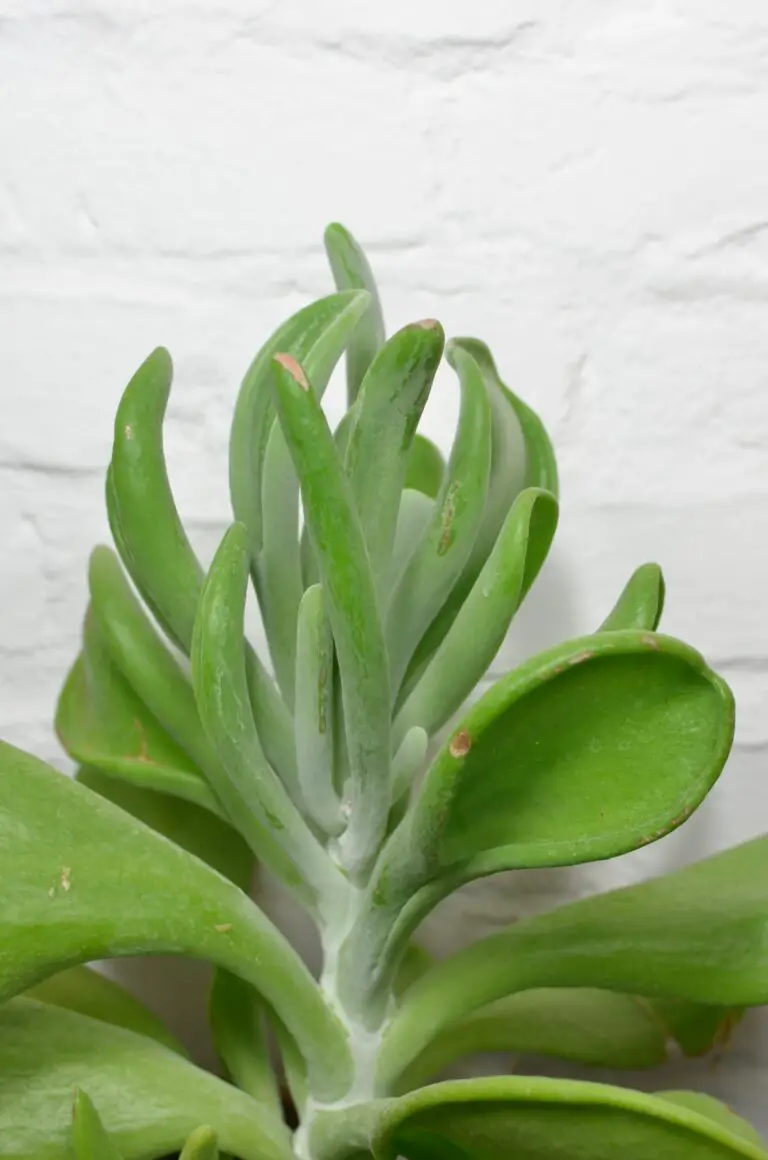
Real-life example? Picture Annie’s Jade Plant, once a mere sprout, now a luscious centerpiece in her dining room. Her secret: sticking to this straightforward feeding schedule with the precision of a master chef. And the result? A Crassula ovata that’s the envy of neighbors and a testament to the power of proper plant nutrition.
By following these simple yet effective feeding tips, your Crassula ovata will not only survive but thrive, showcasing a tapestry of rich, green leaves that mirror your plant nurturing skills. So, ready to roll up your sleeves and play chef to your green companion? Bon appétit!
Pruning and Shaping Techniques
Let’s talk about giving your Crassula ovata, also known as the Jade Plant, a little trim-spa experience. Just like your favorite hairstyle, the key to a perfectly shaped Crassula is regular haircuts—well, in this case, leaf-cuts. The best time to grab your shears is during the plant’s active growth phase in the spring and summer. This is when it can heal faster, and you’ll soon see new branches springing to life.

Picture this: You’ve got your healthy Jade Plant thriving, but you notice it’s starting to look more like a wild bush than the compact, tree-like shape you adore. Fear not! It’s snip time. By pruning the longer, untamed branches, you encourage the plant to focus its energy on growing sturdier and bushier rather than taller. It’s like training a puppy with treats, but here, the treat is your careful pruning, and the puppy is your eager green buddy reaching for that sunlight.
So, how do you create that lush, full look? Start by identifying any leggy branches—these are the ones that are stretching out a bit too long, breaking the plant’s symmetry. Give them a gentle pinch or use clean, sharp scissors to cut them back to the desired length. Remember, a clean cut is like a clean slate; it helps prevent any unnecessary stress on your Crassula ovata.
Here’s a quick tip: Cut just above a leaf node—the point where leaves are attached to the stem. This encourages the plant to branch out right below the cut. Before you know it, your Jade Plant will start resembling a mini-tree, complete with a thick and woody trunk and a canopy of dense, glossy leaves.
Don’t rush the process though. Nature is not a speed race; it’s more like a leisurely stroll in the park. Prune a little at a time, and let the plant respond. Over time, with your patience and precision, your Crassula ovata will transform into the envy of the succulent world—a testament to your green thumb and pruning prowess!
Propagation: Multiplying Your Jade Plant
Ever glanced at your robust Crassula ovata and thought, “I need more of these emerald beauties in my life!”? Good news—propagating your Jade Plant is as simple as pie. You’ll go from plant parent to plant grandparent in no time! Let’s roll up our sleeves and delve into the surprisingly straightforward world of Crassula ovata propagation.
First up, the leaf technique. Picture this: You take a healthy, plump leaf from your Jade Plant—a tiny token that’s about to embark on a grand adventure. Now, give it a little TLC. Lay it on some well-draining soil, and like a magic trick, tiny roots and a miniature plant begin to emerge. It’s a waiting game, but the payoff is immense as you witness life unfolding before your very eyes.
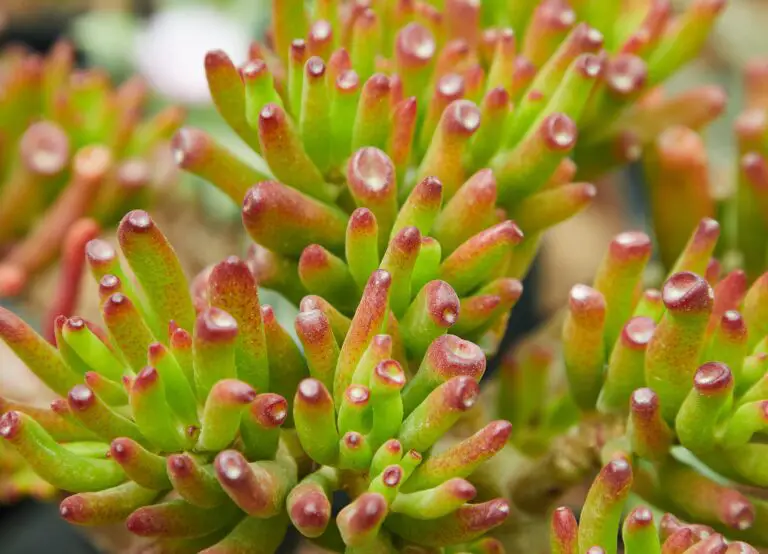
But why stop at leaves? If you’re feeling daring, graduate to cuttings. Snip a healthy stem, an eager offshoot longing for independence, and let it dry just a tad—prepping it for its solo journey. Plant your cutting in a cozy mix of soil and sand and watch as it strikes down roots, striving for growth. It’s like sending a kid off to college and watching them flourish into a full-fledged adult.
Step-by-Step Leaf Propagation
Gather around, fellow Jade enthusiasts, for the step-by-step guide to leaf propagation. It’s a thrilling mini-epic starring none other than your own hands:
- Choose a healthy, mature leaf and gently twist it from the stem, ensuring a clean pull.
- Lay the leaf on a dry, clean surface for a few days until the end callouses over.
- Place the calloused end atop a pot filled with well-draining succulent mix.
- Mist the soil sparingly; overwatering is the nemesis of propagation!
- Shield your nascent plantling from direct sunlight, cherishing its tender beginnings.
- In weeks, behold roots! Then a baby plant! Your botanical ensemble is expanding!
Victorious Stem Cuttings
Are you ready to tackle stem cuttings? Here’s the play-by-play:
- Measure out a cutting about 3-4 inches long; make sure it’s from a sturdy, vibrant section of your plant.
- Allow the cut end to dry and heal for a few days, forming a makeshift scab.
- Plant the healed cutting in a mix of succulent soil and sand, which cradles your cutting like a cloud.
- Water minimally—a gentle sip for your succulent, not a gulp!
- A snug spot with indirect light is your cutting’s best friend, cheering it on to develop roots.
- Patience rewards you with success—a new Crassula ovata stands tall, ready to take on the world alongside its kin.
Propagation isn’t just botanical wizardry—it’s a bridge that connects generations of Jade Plants. Each leaf or stem cutting becomes a cherished chapter in your horticultural story, a testament to the enduring legacy of the Crassula ovata. So gather your garden gloves and let the propagation saga begin!
Common Pests and Issues
Let’s talk about the unwanted guests that can turn your thriving Crassula ovata into a plant ER scenario. These pests and issues, if left unchecked, can wreak havoc on your beloved Jade Plant. But fear not! With a bit of know-how, you can keep these pesky intruders at bay and ensure your Jade remains the envy of your plant-loving friends.
The most common culprits? Spider mites, mealybugs, and aphids stand out as the arch-nemeses of the Jade Plant world. Spider mites are tiny, but their effects are mighty, leaving behind a telltale webbing on the underside of leaves and drained, colorless patches where they’ve feasted. Mealybugs, those fluffy white houseguests, congregate in nooks and crannies, sucking the life out of your plant. And aphids, the sap-suckers, bring a myriad of issues, from stunted growth to distorted leaves.
But it’s not just bugs you need to watch out for. Overwatering is the Jade Plant’s kryptonite, leading to root rot—a silent killer that sneaks in when your plant’s feet are too wet for too long. Imagine you’ve just enjoyed a hearty meal, only to sit in a bath indefinitely—sounds uncomfortable, right? That’s how your Jade feels with wet roots!
Prevention is the name of the game. Be a detective—inspect your plant regularly, looking under leaves and along stems for any signs of unwanted visitors or distress. Quarantine new plants before introducing them to your plant squad to avoid any potential “insect transfers.” And when it comes to watering, it’s all about tough love; these succulents prefer a drought over a flood, so let that soil dry out completely between watering sessions.
Now, let’s say the pests have already landed, and your Jade is starting to resemble a bug buffet. It’s time to take action. Wipe down leaves with a mild soap solution, introduce beneficial insects like ladybugs, or use insecticidal soaps and neem oil. These methods can be highly effective when done with care and consistency. Remember, it’s a battle of perseverance—appropriate for a warrior plant like the Crassula ovata.
And before you panic about those mushy stems or yellowing leaves signaling potential root rot, take a deep breath. First, confirm your diagnosis. Then, it might be time for some plant surgery—removing the affected areas and repotting your plant in fresh, properly draining soil can give your Jade a new lease on life.
Confronting these challenges can be daunting, but with the right care and a watchful eye, your Crassula ovata will not only survive but thrive. So roll up your sleeves, grab your magnifying glass, and show those pests they’ve messed with the wrong plant parent!
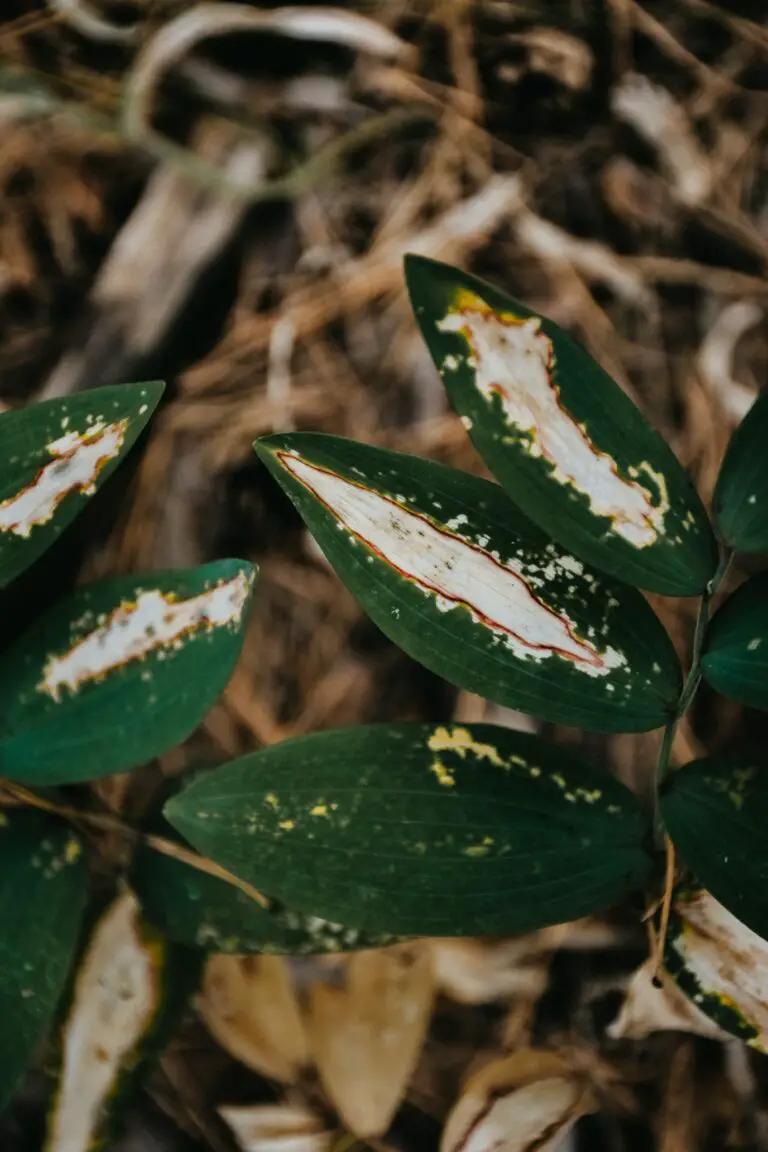
Repotting Practices for Long-Term Health
Ever wondered why your resilient Crassula ovata, commonly known as Jade Plant, starts sulking after a year or two? It might just be screaming for a new home – a pot upgrade! Repotting this hardy succulent is less about green thumbs and more about timing, the right soil, and gentle hands. Let’s dig into this transformative process that will keep your Jade plant thriving for years.
Timing the Repot: Understanding When It’s Time to Move
So, when exactly is the right time to repot your treasured Jade? There’s a simple tell-tale sign – roots peeking out from the drainage holes. If not, gently lifting the plant and discovering a dense web of roots encircling the soil confirms it’s time. This is usually every 2 to 3 years, but your plant will communicate its needs, so stay observant. The best season? Early spring, just as the plant awakens from its winter rest and its energy is shooting up for new growth.
Choosing the Perfect Pot: Size, Material and Drainage
Imagine being stuck in tight shoes. Ouch, right? Your Jade feels the same about pots. Upgrade to a container just one to two inches wider in diameter to give those roots some breathing room. Terra-cotta pots are the go-to for succulents like Crassula ovata – they’re breathable and wick away excess moisture, mitigating root rot risks. And never compromise on drainage! A pot with holes at the bottom is a non-negotiable for any succulent.
The Repotting Technique: A Gentle Touch for Your Green Buddy
Now for the action! Start by preparing a succulent-friendly soil mix – one part organic potting soil to one part coarse sand, or use a pre-mixed cactus potting soil for ease. Gently remove your Jade from its current pot. Whispering words of encouragement is optional but recommended! Tease out the roots lightly if they’re tightly balled up, then center your plant in the new pot. Fill in with soil mix, lightly tamp to stabilize the plant, and voilà! Water sparingly and avoid direct sun for a week to let it settle.
Watch this transformation unfold with a wonderful repotting guide we’ve unearthed for you:
Whether it’s a stout shrubby variant or a delicate trinket-sized Jade, the right repotting approach is crucial. Remember, a happy Crassula ovata means a lush explosion of jade-green leaves – a symbol of growth and renewal. Embrace the repot as a celebrated milestone in your gardening journey and watch your Jade plant not just grow but flourish!
Final Thoughts on Caring for Crassula Ovata
As we encase our journey through the lush world of the Crassula ovata, or as many fondly know it, the Jade Plant, let’s take a moment to reflect on the verdant wisdom we’ve garnered. This succulent isn’t just a plant; it’s a living testament to simplicity in care and resilience. By now, you’re equipped with all the know-how to ensure your green companion not only survives but thrives.
Remember, patience is more than a virtue when it comes to growing Jade Plants—it’s a prerequisite. Watch with marvel as your care translates into growth, step by step, leaf by leaf. Imagine the feeling of accomplishment as you witness the first flush of robust, glossy leaves—nature’s own gemstones—adorning your resilient, steadfast buddy.
Envision the conversations sparked by the statuesque presence of a mature Crassula ovata, a centerpiece in your living space that’s a testament to your nurturing. It’s not just about the right amount of sunlight or the precise watering schedule—it’s about the journey you undertake with your plant. Each new branch is a shared success, a narrative of your joint exploration into the world of botanic beauty.
Let these final musings on your verdant charge serve not as an endpoint but as a celebration of growth—both yours and your plant’s. With gentle care, a bit of environmental savvy, and an appreciation for the simple joys of gardening, your Jade Plant will be a lush, living sculpture, emerald in hue and rich in personal reward.
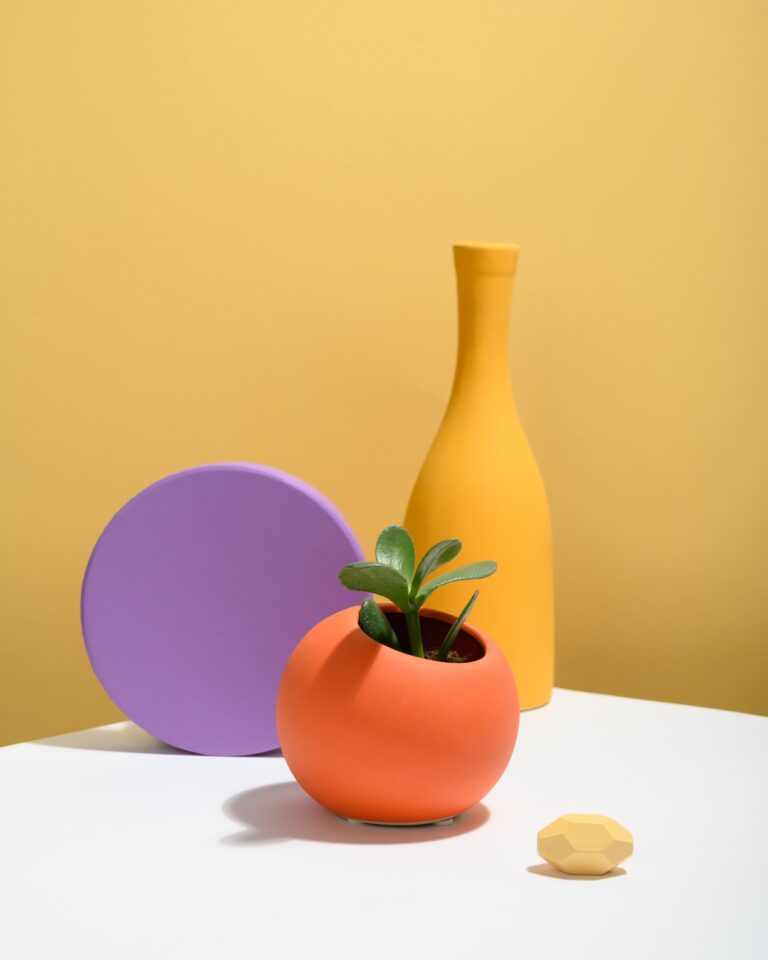
So, take these insights, commit them to memory—or better yet, to heart—and tend to your Crassula ovata with the knowledge that each day is an opportunity for new growth. Whether you’re a seasoned botanist or a green-thumbed novice, the Jade Plant extends an invitation to all: to grow, to flourish, and to find a bit of peace in the act of nurturing life.
Frequently Asked Questions
Embarking on your green thumb adventure with the charming Crassula ovata, commonly known as the Jade Plant, can raise many questions. Fear not, for we’ve gathered some of the most common inquiries with straightforward answers to help your succulent thrive!
Can My Jade Plant Survive in Low Light Conditions?
While Crassula ovata does admire the sun’s embrace, it’s also quite adaptable and can persevere in lower light conditions. Remember that growth may be slower, and its vibrant green hue might fade. Picture a Jade Plant sitting on a desk, away from the window, still standing stout—this could be yours, although it surely would prefer a sunnier spot to truly flourish.
How Often Should I Water My Crassula ovata?
Overwatering is the nemesis of many succulents! Water your Crassula ovata deeply, but infrequently. Let the soil dry out completely between watering. Imagine leaving a soaking sponge to dry; that’s what your Jade Plant’s soil should feel like before you quench its thirst again.
What Are the Best Pots for a Jade Plant?
Sculpting its thick, woody stems and plush leaves, the Jade Plant needs a pot that aids its root health. Thus, opt for a terracotta or clay pot with excellent drainage holes. Think of it like a comfy pair of shoes that allows your feet to breathe—your Crassula ovata demands the same luxury for its roots.
Is It Normal for Crassula ovata Leaves to Fall Off?
Occasional leaf drop isn’t unusual, particularly when adjusting to a new environment. However, if your Jade Plant is shedding more than a costume during a cabaret, evaluate your care routine for possible water mismanagement or abrupt temperature changes.
When Should I Fertilize My Jade Plant?
Imagine gearing up for a marathon; that’s akin to what fertilizing does for your Crassula ovata. Employ a balanced, water-soluble fertilizer sparingly during its active growing season in spring and summer. It’s like a nutrient smoothie to keep your green companion energized.
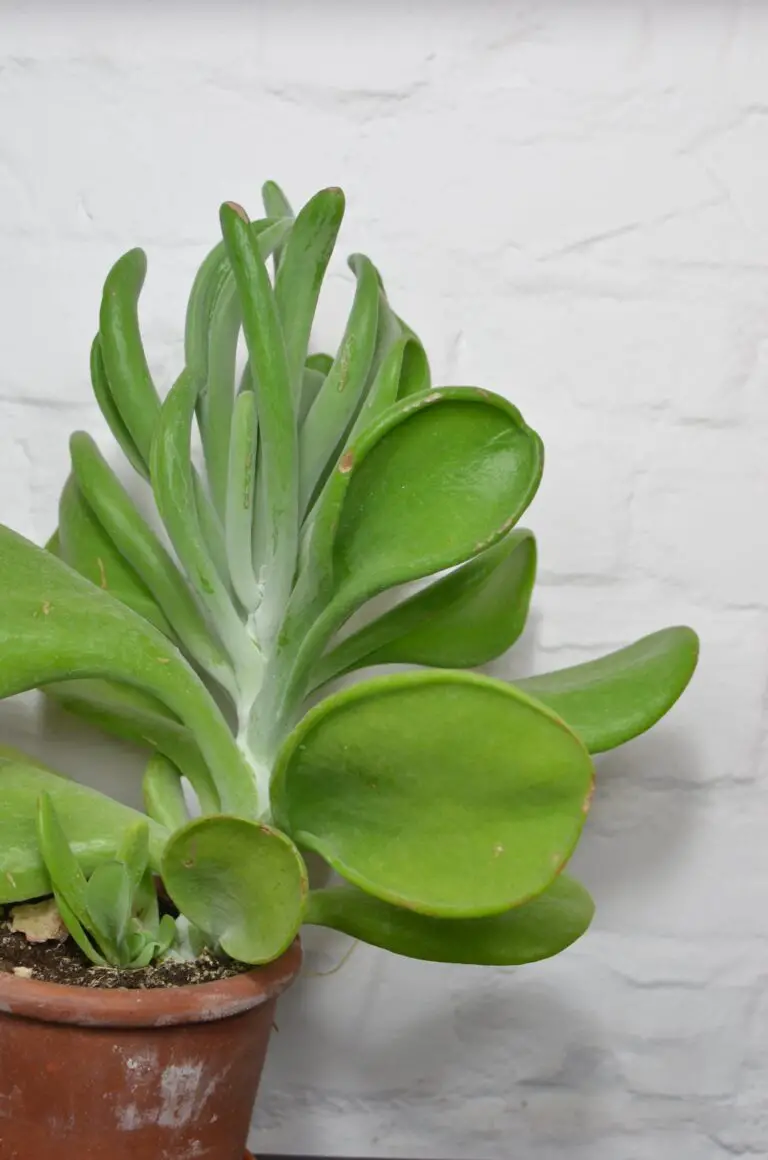
Can I Propagate My Crassula ovata From a Leaf?
Absolutely! Propagating a Jade Plant can be as delightful as baking cookies from scratch. Pluck a healthy leaf, let it form a callus for a couple of days, and then gently nestle it atop the soil like tucking in a seedling under a cozy blanket. With patience and a sprinkle of care, you’ll soon witness the miracle of new growth.
Does the Jade Plant Have Any Pest Problems?
No plant is impervious to pests, and the Jade Plant is no exception. Watch out for common culprits like mealybugs and spider mites. A keen eye and early intervention can turn your plant’s pest horror story into a triumph worthy of a garden legend.
Tending to a Crassula ovata is not just gardening; it’s a journey of growth, learning, and appreciation. With these FAQs in your back pocket, you’re well-equipped to ensure your Jade Plant not only survives but thrives, gracing any space with its lush, emerald charm.



